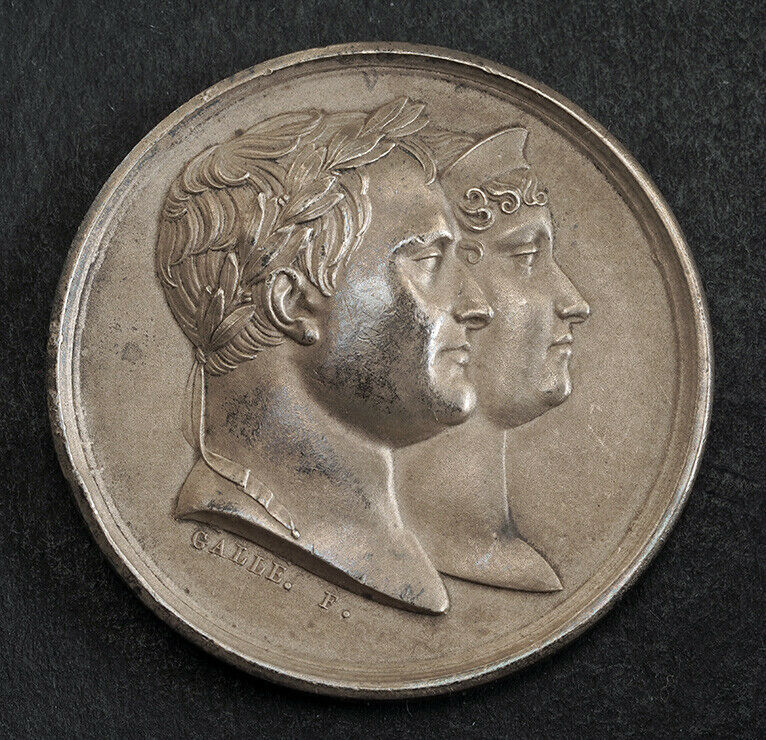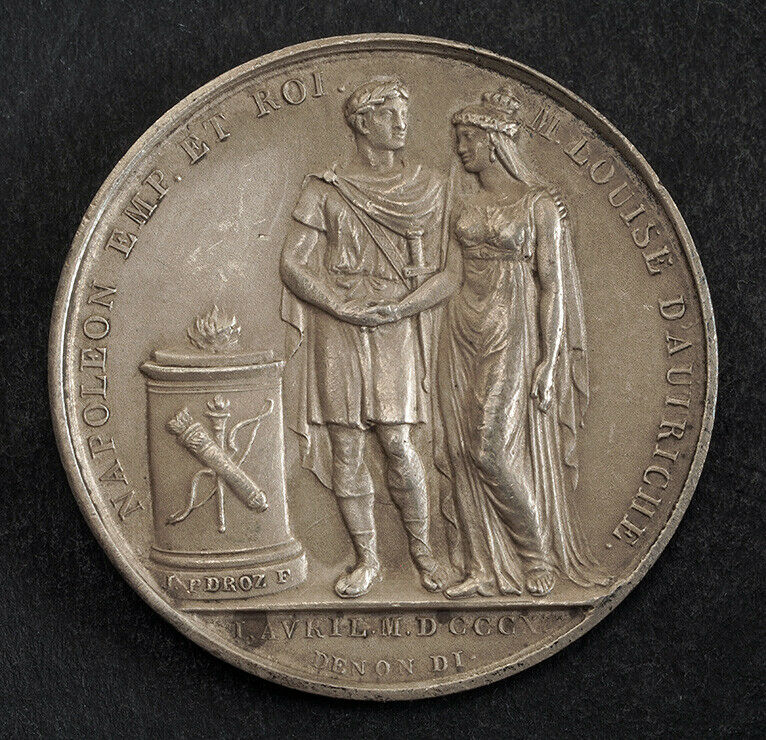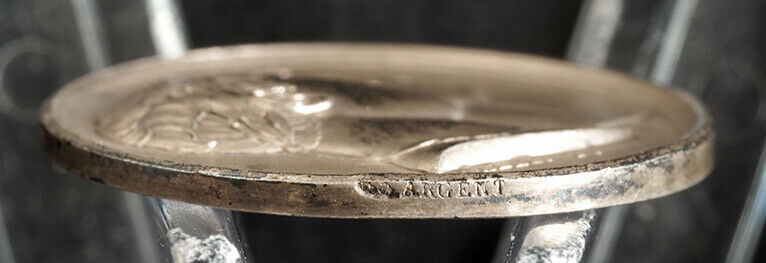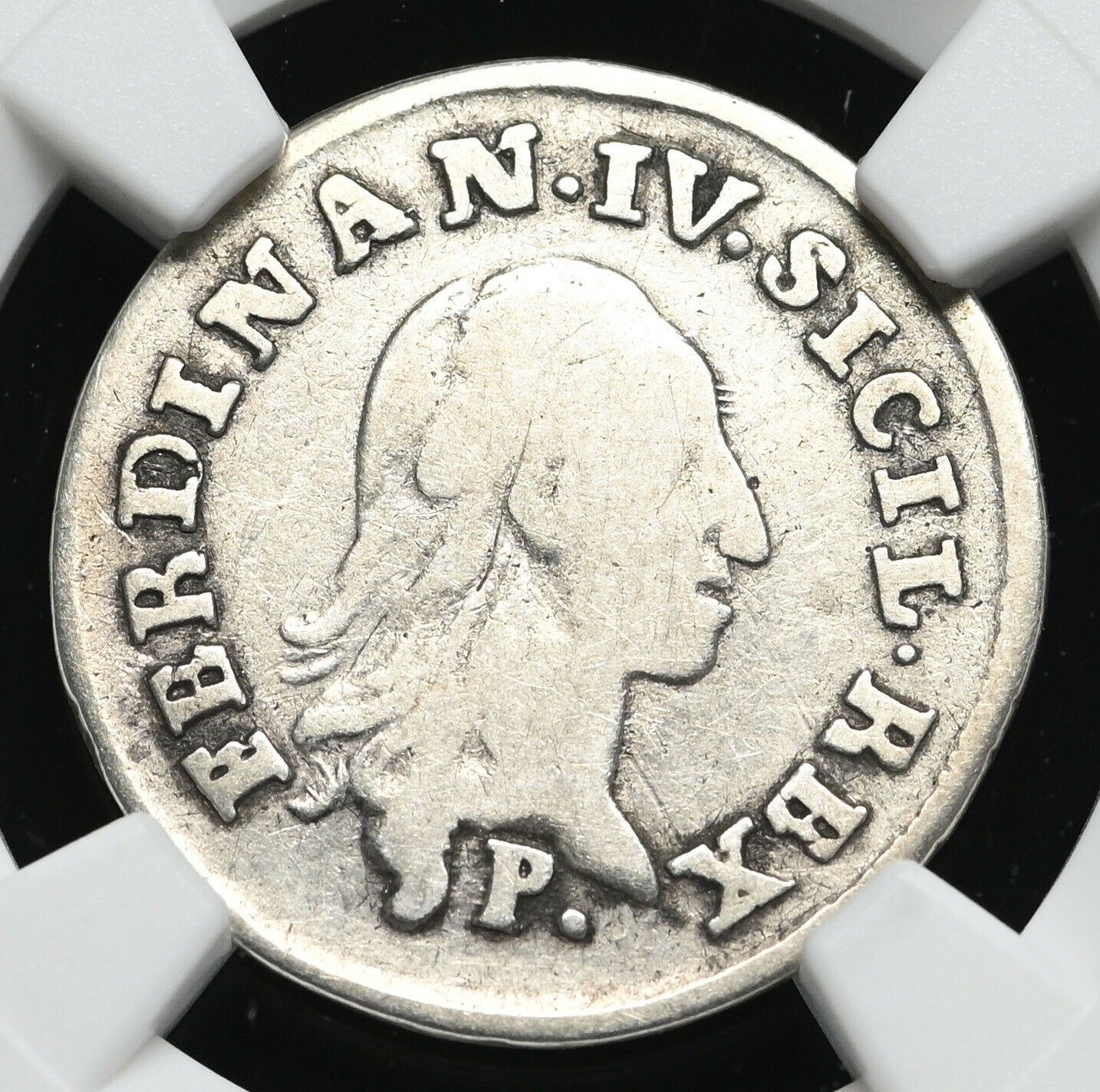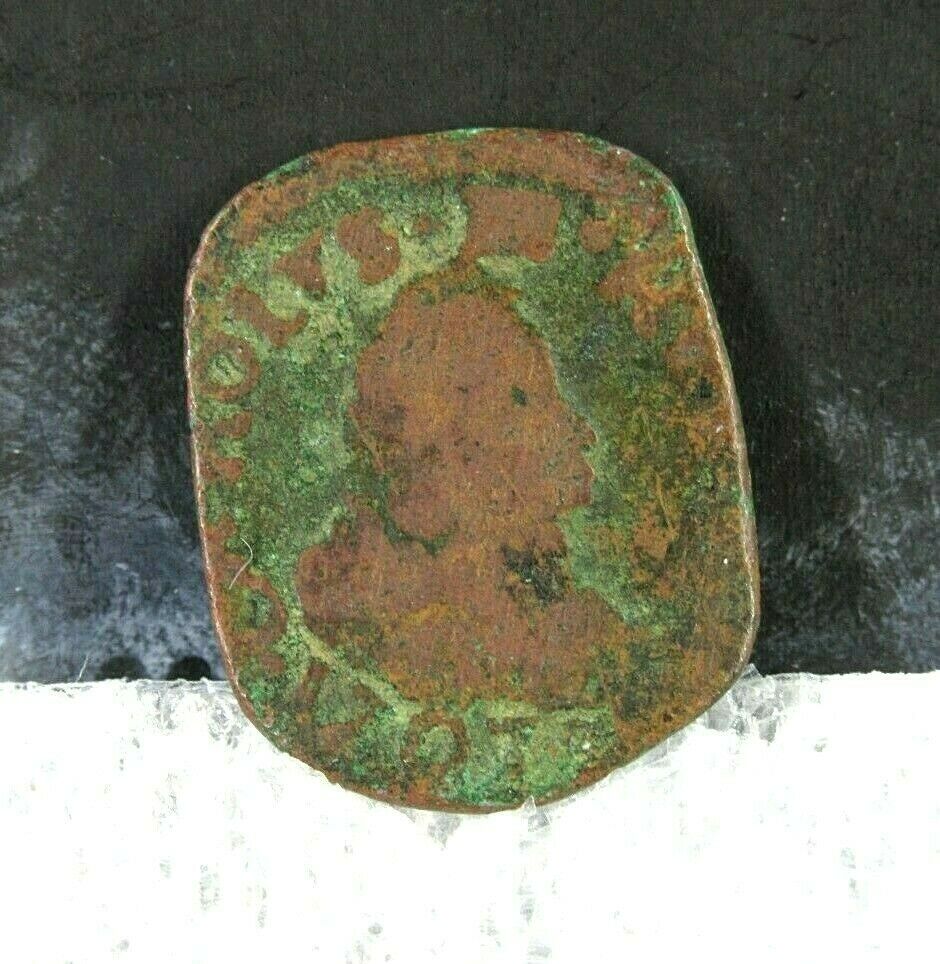-40%
1810,France/Italy. Silver "Marriage of Napoléon & Marie-Louise" Medal. Restrike!
$ 0.52
- Description
- Size Guide
Description
CoinWorldTV1810, France/Italy. Silver "Marriage of Napoléon & Marie-Louise" Medal. Restrike!
Mint Place: Paris
Medallist: Galle & Droz
Reference: Bramsen 955.
Condition:
Struck with matted dies, dark toning spots, otherwise XF!
Mint Year: dated 1810,
restruck ca. 1880-1901 (judging by the cornucopia edge marking!
).
Denomination: Medal -
Wedding of Napoleon Bonaparte and Marie-Louise of Austria (later duchess of Parma) in on 1st of April 1810 in Paris.
Diameter: 26mm
Weight: 7.81gm
Material: Silver
Obverse:
Jugate busts of Napoléon, laureate, and Marie-Louise, diademed, right .
Reverse
: Napoléon standing facing, head right, clasping hands with Marie-Louise standing left; to left, lighted altar decorated with crossed bow, quiver.
Legend: NAPOLEON EMP ET ROI – M. LOUISE D'AUTRICHE.
Exergue: I. AVRIL. M. DCCCX. X. / DENON DI . .
Authenticity unconditionally guaranteed.
Bid with confidence!
Marie Louise of Austria
(German:
Marie Louise von Österreich
12 December 1791 – 17 December 1847), born
Archduchess Marie Louise of Austria
(German:
Erzherzogin Marie Louise von Österreich
), became upon marriage
Empress of the French
(French:
impératrice Marie Louise des Français
), and in 1817 became
Duchess of Parma, Piacenza and Guastalla
(Italian:
Maria Luisa, Duchessa di Parma, Piacenza e Guastalla
).
She was the second wife of Napoléon Bonaparte and thus Empress of the French. She was also a double grandniece of Marie Antoinette. She was the mother of Napoleon II, King of Rome.
Marie Louise (who was given the Latin baptismal name of
Maria Ludovica Leopoldina Francisca Theresa Josepha Lucia
) was born in Vienna, the daughter of Francis II, Holy Roman Emperor (Francis I of Austria) and of his second wife, Maria Theresa of the Two Sicilies. Marie Louise was also a double great-granddaughter of Maria Theresa of Austria, thus a double grandniece of Marie Antoinette, as she was a paternal granddaughter of Leopold II, Holy Roman Emperor (Maria Theresa's son, Marie Antoinette's brother) and a maternal granddaughter of Marie Caroline of Austria, Queen of Naples and Sicily (Maria Theresa's daughter, Marie Antoinette's sister).
To make her more marriageable, her parents had her tutored in many languages. In addition to her native German, she became fluent in English, French, Italian, Latin, and Spanish.
On 11 March 1810, the 18-year-old archduchess married French Emperor Napoléon I by proxy, with a subsequent ceremony taking place in the chapel of the Louvre on 1 April 1810. The bride's father intended the marriage to strengthen links between the Austrian Empire and the First French Empire. Napoleon sought the validation and legitimation of his Empire by marrying a member of the House of Habsburg, one of the oldest ruling families of Europe. He also hoped to cement his position by fathering a legitimate heir. Napoleon had previously tried to marry Grand Duchess Anna of the House of Romanov, younger sister of Tsar Alexander I of Russia, but his proposal had been refused.
When Marie Louise moved to France, she brought with her a number of Austrian recipes. She developed a recipe for roquefort-stuffed chopped beef that later became quite popular in restaurants.
On 20 March 1811, Marie Louise (as she was known in France) gave birth to a son, Napoléon François Joseph Charles Bonaparte, styled King of Rome and later Duke of Reichstadt. Marie Louise acted as Regent of France from April to December 1812 during the Russian campaign and again from April 1813 to January 1814 during her husband's absence in the German campaign. After Napoléon was forced to abdicate his throne in April 1814, he was exiled to the island of Elba. Marie Louise returned to Austria, never to see her husband again.
Napoléon claimed at one point to prefer Marie Louise to his first wife Joséphine de Beauharnais; while he had loved Joséphine, he claimed, he had not respected her, whereas with Marie Louise, there was "Never a lie, never a debt" — presumably a reference to Josephine's rumoured extramarital affairs and reputation as a spendthrift.
After Napoleon's abdication in April 1814, Marie Louise and her son fled Paris to Blois, and then to Vienna. The Treaty of Fontainebleau of 11 April 1814 allowed her to retain her imperial rank and style (Her Imperial Majesty The Empress Marie Louise) and made her the ruler of the duchies of Parma, Piacenza, and Guastalla, with her son as heir. However, in 1815, the Congress of Vienna revised this arrangement and made her Duchess of Parma for her life only, with the details of who would become Duke of Parma after her death unspecified. In 1817, a treaty was signed which would leave the duchies to a member of the House of Bourbon. In 1844 it was determined that the duchy of Guastalla would be inherited by the Duke of Modena.
In 1821, four months after Napoleon's death, Marie Louise married morganatically her lover, Count Adam Albert von Neipperg (1775-1829).
Napoleon Bonaparte
(15 August 1769 – 5 May 1821) was a French military and political leader who had a significant impact on the history of Europe. He was a general during the French Revolution, the ruler of France as
First Consul
of the French Republic and
Emperor
of the First French Empire.
Born in Corsica and trained as an artillery officer in mainland France, he rose to prominence during the French Revolution and led successful campaigns against the First and Second Coalitions arrayed against France. In 1799, Napoleon staged a
coup d'état
and installed himself as First Consul; five years later he crowned himself Emperor of the French. In the first decade of the nineteenth century, he turned the armies of France against every major European power and dominated continental Europe through a series of military victories - epitomised in battles such as Austerlitz and Friedland. He maintained France's sphere of influence by the formation of extensive alliances and the appointment of friends and family members to rule other European countries as French client states.
The French invasion of Russia in 1812 marked a turning point in Napoleon's fortunes. His
Grande Armée
was wrecked in the campaign and never fully recovered. In 1813, the Sixth Coalition defeated his forces at Leipzig, invaded France and exiled him to the island of Elba. Less than a year later, he returned and was finally defeated at the Battle of Waterloo in June 1815. Napoleon spent the last six years of his life under British supervision on the island of Saint Helena, where he died in 1821. The autopsy concluded he died of stomach cancer though Sten Forshufvud and other scientists in the 1960s conjectured that he had been poisoned with arsenic.
Napoleon developed few military innovations, drew his tactics from different sources and scored major victories with a modernised French army. His campaigns are studied at military academies the world over and he is widely regarded as one of history's greatest commanders. While considered a tyrant by his opponents, he is remembered for the establishment of the Napoleonic code, which laid the administrative foundations for much of Western Europe.
Only 1$ shipping for each additional coin purchased!
